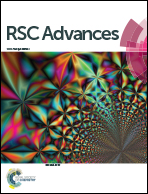A comparison of catabolic pathways induced in primary macrophages by pristine single walled carbon nanotubes and pristine graphene
Abstract
Understanding the correlation between the physico-chemical properties of carbonaceous nanomaterials and how these properties impact on cells and subcellular mechanisms is critical to their risk assessment and safe translation into newly engineered devices. Here the toxicity, uptake and catabolic response of primary human macrophages to pristine graphene (PG) and pristine single walled carbon nanotubes (pSWCNT) are explored, compared and contrasted. The nanomaterial toxicity was assessed using three complementary techniques (live–dead assay, real time impedance technique and confocal microscopic analysis), all of which indicated no signs of acute cytotoxicity in response to PG or pSWCNT. Transmission electron microscopy (TEM) demonstrated that PG was phagocytosed by the cells into single membrane lysosomal vesicles, whereas the primary macrophages exposed to pSWCNT contained many double membrane vesicles indicative of an autophagic response. These distinct catabolic pathways were further verified by biochemical and microscopic techniques. Raman spectroscopic mapping was used to explore the nanomaterial uptake and distribution. Based on the G-band, significant uptake and accumulation of the PG in discrete vesicles was recorded, whereas the pSWCNT were not taken up to the same extent. Thermogravimetric analysis (TGA) of the cells treated with PG revealed that ∼20–30% of the remaining dry mass was made up of PG. No detectable amount of pSWCNT was recorded using TGA. TEM analysis confirmed that PG was still graphitic even after 24 hours of accumulation in the lysosomal compartments. In conclusion, these two nanomaterials, with similar surface chemistries but unique geometries, differ significantly in their uptake mechanisms and subsequently induced lysosomal and autophagic catabolic pathways in human primary macrophages.


 Please wait while we load your content...
Please wait while we load your content...